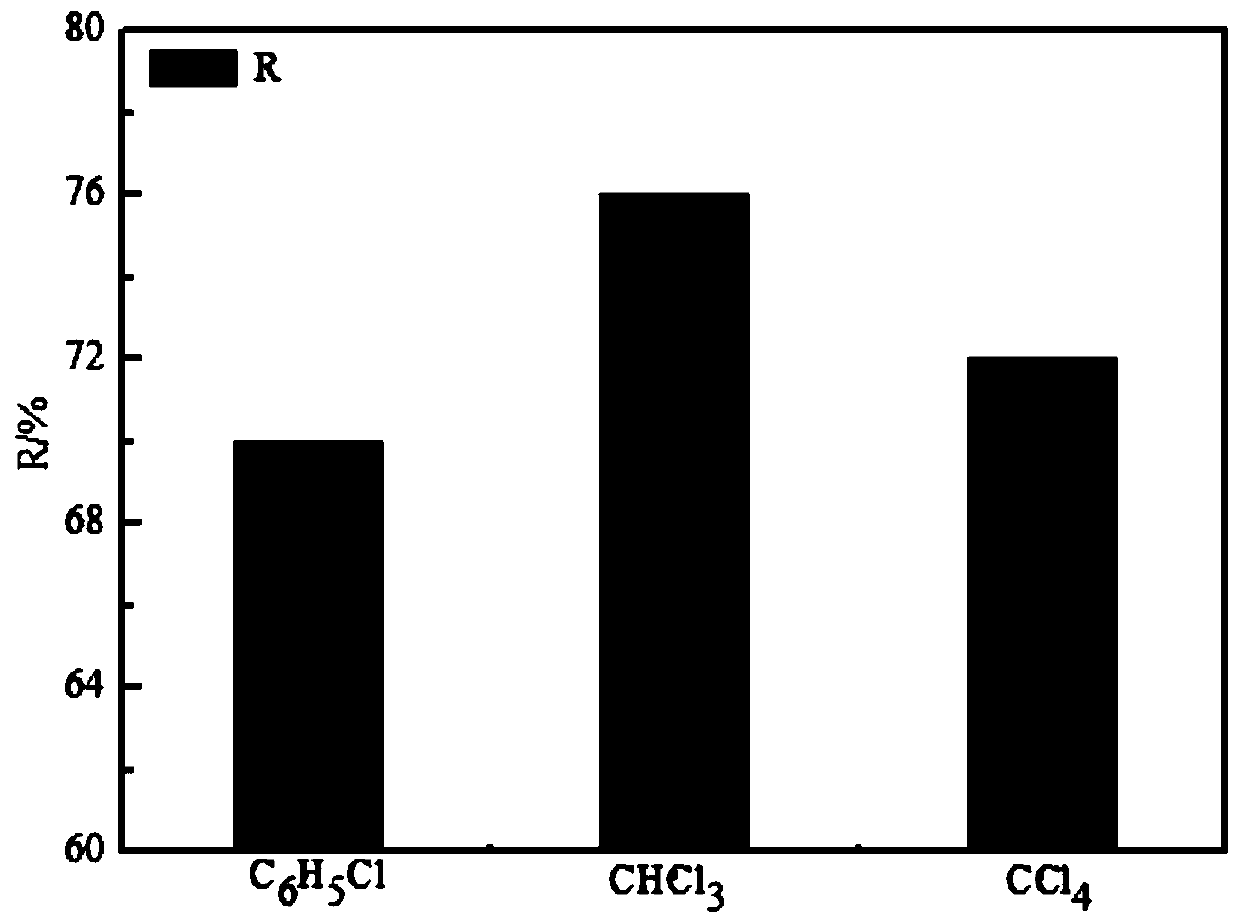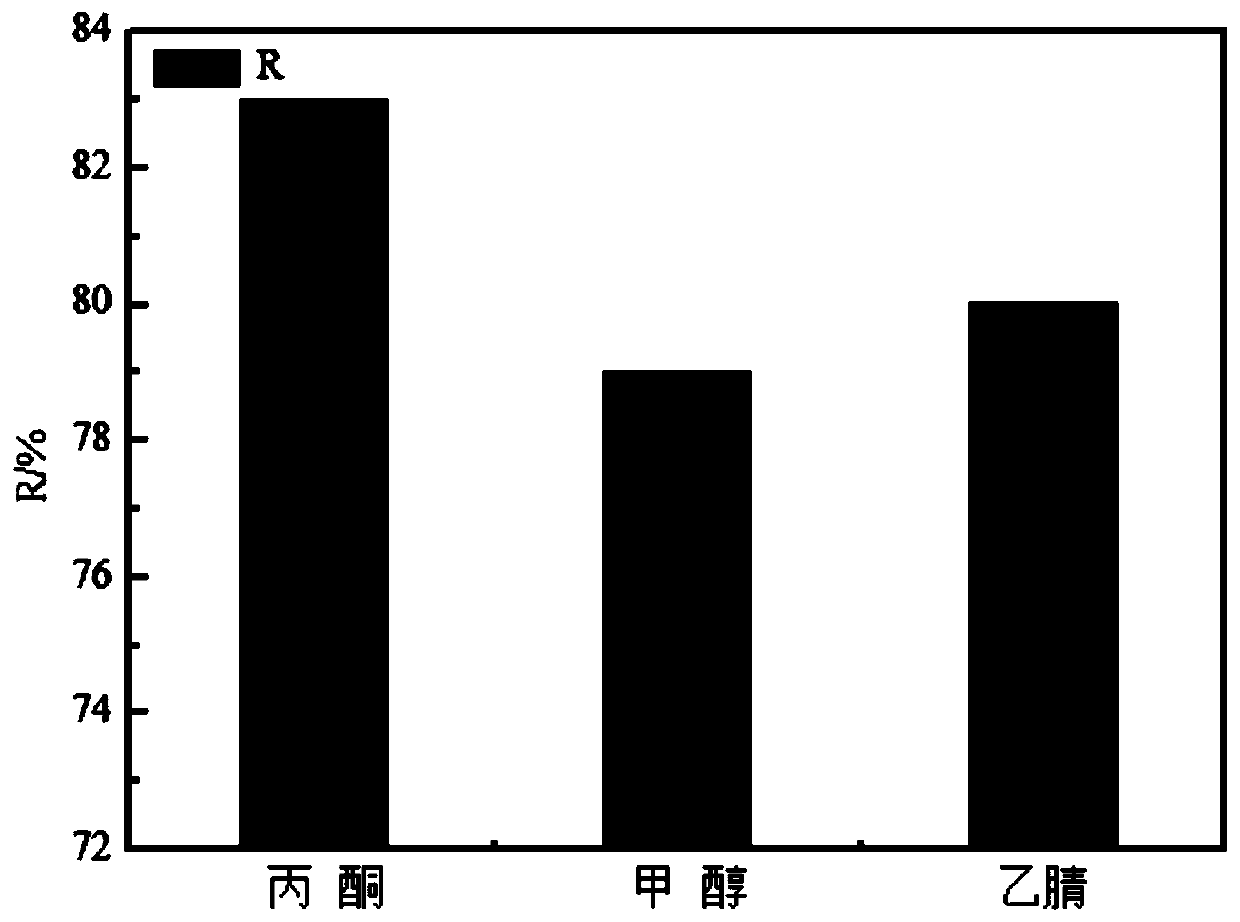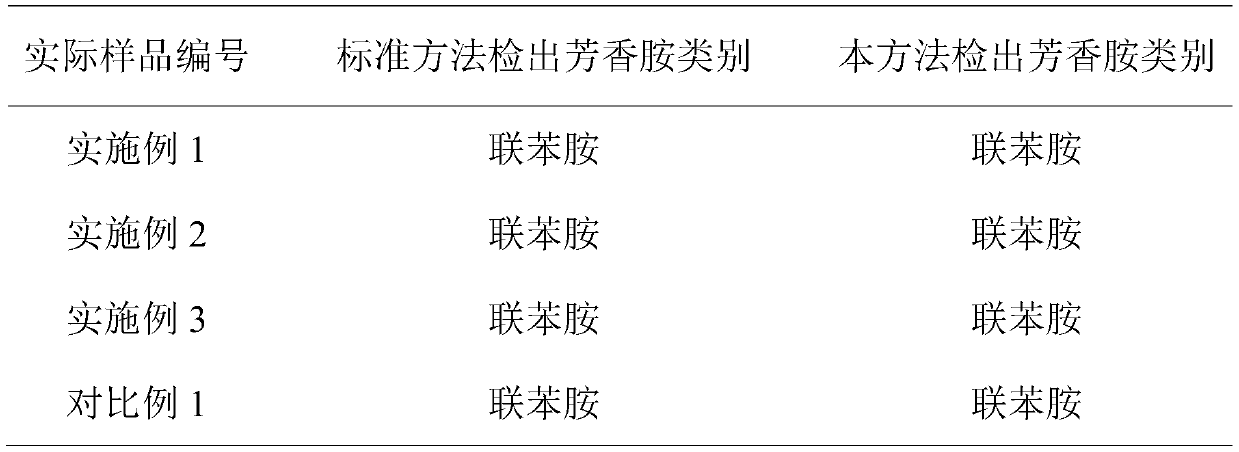Method for detecting azo dyes in crocodile leather products and evaluation system constructing method
A technology for the detection of banned azo dyes, applied in the field of detection methods and evaluation system construction of banned azo dyes in crocodile skin products, can solve the problems of low detection accuracy, long pretreatment time, cumbersome detection process, etc.
- Summary
- Abstract
- Description
- Claims
- Application Information
AI Technical Summary
Problems solved by technology
Method used
Image
Examples
Embodiment 1
[0056] A detection method for prohibited azo dyes in crocodile skin products:
[0057] Sample preparation: Take a belt made of crocodile skin, cut it into a small sample of about 5 mm × 5 mm, mix it, take 1 g of the small sample, put it in a sealed reactor, add 17 mL of 0.06 mol / L preheated at 70 ° C, pH 6.0 The citrate buffer solution was mixed to obtain a sample treatment solution, and the reactor was kept at 70° C. for 30 minutes.
[0058] Reduction reaction: Add 3 mL of 200 mg / mL sodium dithionite aqueous solution to the reactor, then continue to place the reactor in a constant temperature water bath at 70°C for 30 min, and then cool to room temperature in an ice-water bath to obtain a reducing solution.
[0059] Extraction: Take 5mL of the above reducing solution in a 10mL centrifuge tube with stopper, add sodium thiosulfate with a mass fraction of 3%, pre-mix 1.0mL acetone and 200μL chloroform, inject it into the bottom of the centrifuge tube, shake it by hand After osc...
Embodiment 2
[0062] A detection method for prohibited azo dyes in crocodile skin products:
[0063] The detection method of the prohibited azo dyes in Example 2 is substantially the same as in Example 1, except that the extraction process is different. Extraction: take 5 mL of the above-mentioned reducing solution in a 10 mL centrifuge tube with a stopper, add a mass fraction of For 5% sodium thiosulfate, mix 1.2mL acetone and 200μL chloroform in advance, inject it into the bottom of the centrifuge tube, shake it by hand for 3min, and place it at a set speed of 4000r·min -1 centrifuge on a centrifuge for 10 min, and after the layers are separated, discard the upper aqueous solution and keep the lower organic phase.
Embodiment 3
[0065] A detection method for prohibited azo dyes in crocodile skin products:
[0066] The detection method of prohibited azo dyes in Example 3 is substantially the same as in Example 1, except that the extract is tetrachloromethane, and the dispersion is acetone.
PUM
| Property | Measurement | Unit |
|---|---|---|
| Concentration | aaaaa | aaaaa |
Abstract
Description
Claims
Application Information
 Login to View More
Login to View More - R&D
- Intellectual Property
- Life Sciences
- Materials
- Tech Scout
- Unparalleled Data Quality
- Higher Quality Content
- 60% Fewer Hallucinations
Browse by: Latest US Patents, China's latest patents, Technical Efficacy Thesaurus, Application Domain, Technology Topic, Popular Technical Reports.
© 2025 PatSnap. All rights reserved.Legal|Privacy policy|Modern Slavery Act Transparency Statement|Sitemap|About US| Contact US: help@patsnap.com



